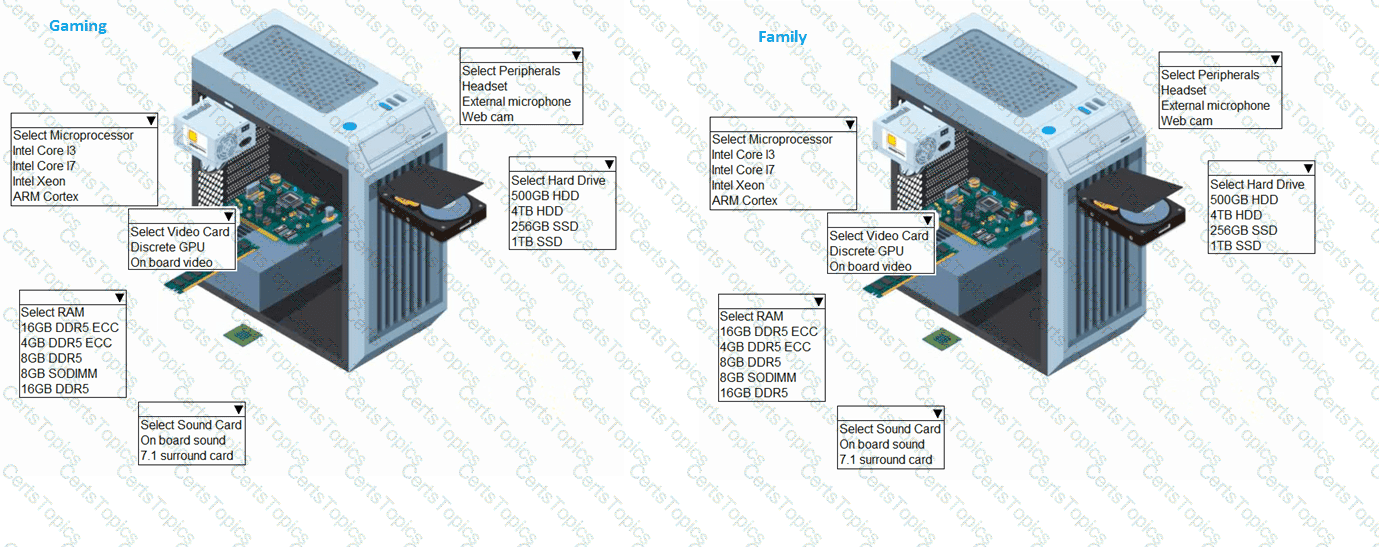A customer has contacted you about building two new desktops. The first desktop will be a gaming workstation. The customer requirements include:
Playing the newest games at a high frame rate
Fast game load times
Enough storage to have several games installed at once
High-end audio
No concern about cost
Running the current Windows OS
The second workstation will be a family workstation. The requirements include:
Capability for word processing, videoconferencing, and basic web surfing
Minimal cost, as long as it meets the requirements
Running the current Windows OS

A help desk technician plugged in a user's new computer to a network port After a few minutes the computer showed an APIPA address. Which of the following is the MOST likely reason this happened?
Every time a user sends a print job, the user must walk over to the printer and press OK before the job will print. The same issue is occurring for multiple users. Which of the following is the MOST likely cause of the issue?
Which of the following video cables can carry an audio signal?